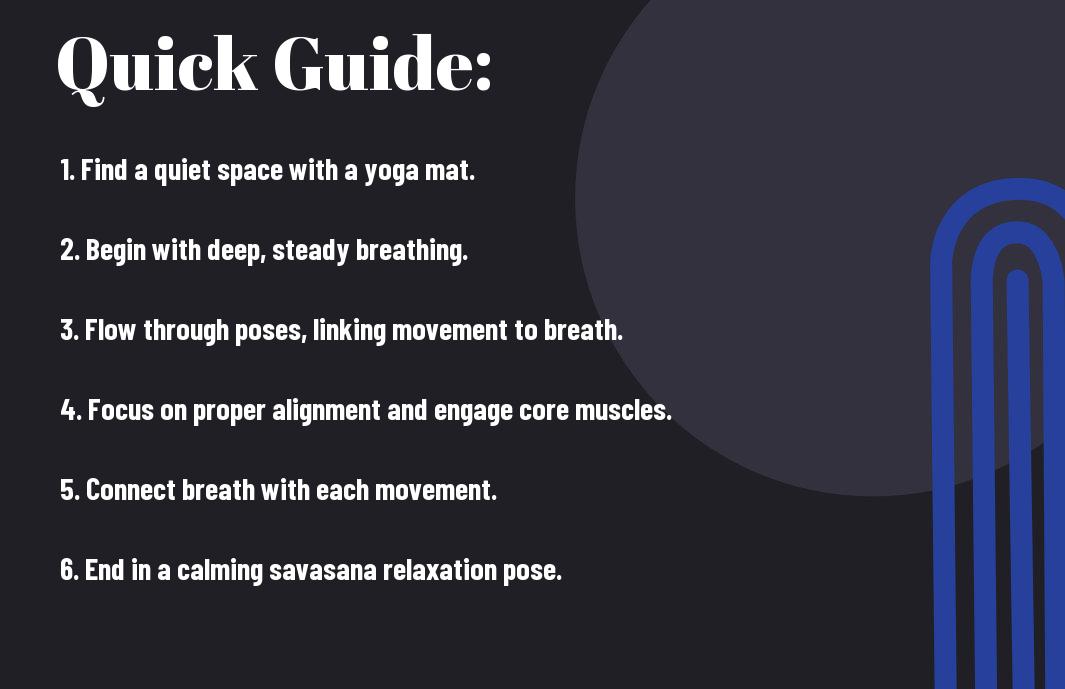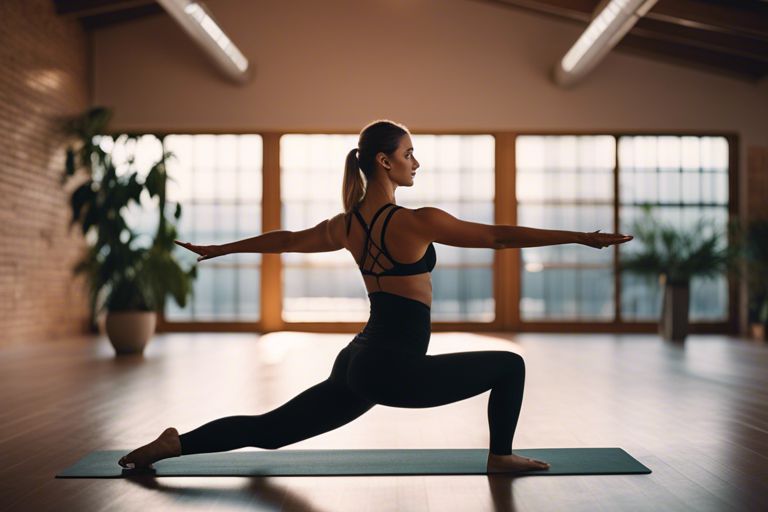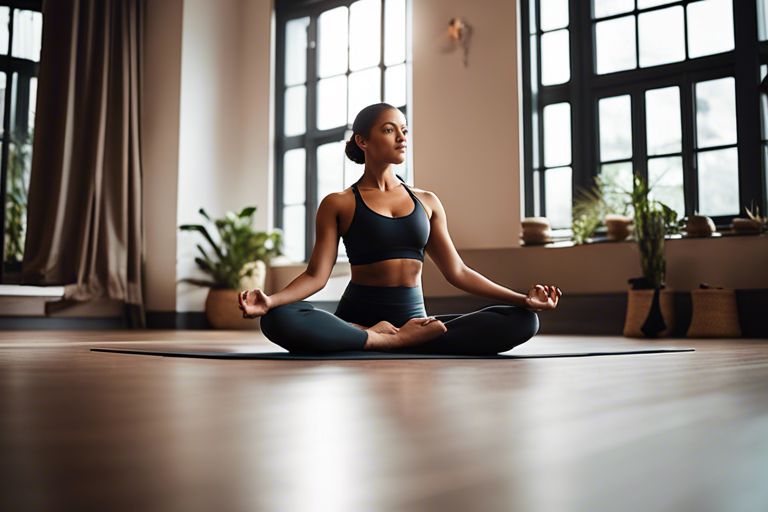Just stepping into the world of Vinyasa yoga? Get ready to experience a dynamic flow of poses that seamlessly blend movement with breathwork. In this guide, we will walk you through the foundations of Vinyasa yoga, offering step-by-step instructions on how to transition between poses, synchronize your breath, and cultivate a sense of calm and focus on the mat. Discover the healing benefits of this practice as you improve flexibility, build strength, and enhance your overall well-being.
Key Takeaways:
- Vinyasa yoga flow: Vinyasa yoga involves a dynamic sequence of poses that are synchronized with deep, rhythmic breathing. The fluid movements in Vinyasa help create a meditative flow between postures.
- Focus on alignment: It’s crucial to maintain proper alignment in each pose to prevent injury and reap the full benefits of the practice. Engage in mindful awareness of your body’s positioning throughout the flow.
- Breath awareness: Deep breathing is a fundamental aspect of Vinyasa yoga, aiding in relaxation, focus, and energy flow. Stay connected to your breath, matching inhalations and exhalations with each movement.

Understanding Vinyasa Yoga
Definition and History
Now, let’s research into the world of Vinyasa Yoga. This dynamic form of yoga links movement with breath to create a continuous flow of poses. The word “Vinyasa” can be translated as “arranging something in a special way,” which perfectly illustrates how each movement is intentionally sequenced to harmonize with the breath.
Types of Vinyasa Yoga
Now, let’s explore the different variations of Vinyasa Yoga. There are various styles such as Power Yoga, Ashtanga, Jivamukti, Anusara, and Rocket Yoga. Each style has its unique focus, pace, and sequence, catering to different preferences and fitness levels. Any yogi can find a Vinyasa practice that resonates with them.
| Definition | Types of Vinyasa Yoga |
| Dynamic flow of poses linked with breath | Power Yoga |
| Intentional sequencing of movements | Ashtanga |
| Harmonizing movement and breath | Jivamukti |
| Various styles to cater to different preferences | Anusara |
| Caters to different fitness levels | Rocket Yoga |
History
Clearly, Vinyasa Yoga has a rich history rooted in ancient Yoga traditions. This style of yoga evolved from Ashtanga Yoga and was popularized in the West by teachers like Pattabhi Jois and Beryl Bender Birch. Vinyasa Yoga is known for its creative sequences, fluid movement, and emphasis on the breath.
Preparing for Vinyasa Yoga
It’s vital to prepare yourself before submerging into a Vinyasa yoga practice. This includes setting up your space, gathering the necessary equipment, and taking into account your physical and mental readiness.
Essential Equipment and Props
Little equipment is needed for Vinyasa yoga, but there are a few key items that can enhance your practice. A yoga mat is vital for providing cushioning and traction during poses. Additionally, having yoga blocks can assist in achieving proper alignment, especially for beginners. A yoga strap is useful for increasing flexibility and reaching certain poses with ease.
Factors to Consider Before Starting
Little factors play a significant role in preparing for Vinyasa yoga. Before starting your practice, consider your physical fitness level and any existing injuries or limitations. It’s important to listen to your body and modify poses as needed to prevent strain or injury. Additionally, mental readiness is crucial for focusing on the breath and staying present throughout the flow.
- Physical fitness level
- Existing injuries or limitations
- Mental readiness
- Thou
Tips for Creating a Conducive Practice Space
Vinyasa yoga is best practiced in a calm and clutter-free environment. When setting up your practice space, consider lighting, temperature, and ambiance to create a peaceful atmosphere. It’s also beneficial to have a designated area with enough room to move freely and perform poses without any obstructions.
- Calming ambiance
- Adequate space for movement
- Thou
Any distractions should be minimized to help you focus on your breath and movements. Creating a space that is warm and inviting can enhance your overall experience and allow for a more peaceful practice.
- Minimized distractions
- Warm and inviting atmosphere
- Thou
Above all, remember that preparation is key to a successful Vinyasa yoga practice. By considering these factors and setting up a conducive space, you can fully immerse yourself in the flow and reap the benefits of this dynamic practice. Stay mindful, stay present, and enjoy the journey on your mat.

Step-by-Step Instructions for Flowing Poses
Not sure how to flow through Vinyasa Yoga poses seamlessly? Check out this Vinyasa Yoga: All You Need to Know to Get Started guide for complete step-by-step instructions.
| Foundational Standing Poses | Seated and Forward-Folding Poses |
| On your mat, begin with Mountain Pose, move through Warrior poses, and end with Tree Pose for grounding. | Poses like Seated Forward Bend and Head-to-Knee Forward Bend help stretch the spine and calm the mind. |
Foundational Standing Poses
On your journey through Vinyasa Yoga, mastering the foundational standing poses is crucial. These poses not only help to improve balance and strength, but they also set the stage for a fluid and graceful practice. Starting with poses like Mountain Pose, moving through Warrior sequences, and grounding with Tree Pose can lay a solid foundation for your Vinyasa flow.
Seated and Forward-Folding Poses
Poses that involve sitting and forward folding are imperative in Vinyasa Yoga practice. These poses, such as Seated Forward Bend and Head-to-Knee Forward Bend, not only help to stretch the spine and hamstrings but also aid in calming the mind and promoting relaxation. Incorporating these poses into your flow can bring a sense of tranquility and introspection to your practice.
Standing strong and tall in foundational poses, bending and folding in seated poses, and lengthening and twisting in backbends and twists are all imperative components of a well-rounded Vinyasa Yoga practice. Each of these categories has its unique benefits and plays a vital role in creating a balanced and harmonious flow on the mat.
Backbends and Twists
Little by little, adding backbends and twists to your Vinyasa flow can bring depth and intensity to your practice. Poses like Cobra Pose and Revolved Chair Pose not only help to open the chest and shoulders but also aid in detoxifying the body and improving spinal flexibility. Incorporating these poses mindfully can bring a new level of strength and flexibility to your practice.
Inversions and Balancing Poses
There’s something magical about finding balance in inversions and balancing poses during a Vinyasa flow. Poses like Handstand and Tree Pose not only challenge your strength and focus but also cultivate a sense of stability and grounding. Exploring these poses with awareness and control can enhance your practice and bring a sense of lightness and freedom to your movements.
Flowing from one pose to another with grace and intention is at the heart of Vinyasa Yoga. As you move through the sequences, focus on linking your breath with your movements to create a seamless flow. Transitioning mindfully from standing poses to seated poses, backbends to twists, and inversions to balancing poses can help you cultivate a sense of mindfulness and presence on the mat.
Savasana and Final Relaxation
Inversions, backbends, twists, and balancing poses can be demanding on the body and mind. This is why the final relaxation pose, Savasana, is considered one of the most important parts of a Vinyasa Yoga practice. Savasana allows your body to integrate the benefits of the practice, and it offers a moment of deep rest and relaxation. It’s a time to let go, surrender, and simply be present in the moment.
For instance, as you come into Savasana, take a moment to scan your body from head to toe, releasing any tension or holding in each area. Allow yourself to sink into the ground, feeling the support beneath you. Focus on your breath, letting it flow naturally and effortlessly. This final relaxation is where the magic of the practice unfolds, providing a space for rejuvenation and restoration. Embrace this time to honor yourself and all the effort you put into your practice.
The Art of Deep Breathing
Understanding the Importance of Breath in Vinyasa Yoga
Breath is the foundation of every Vinyasa practice. In Vinyasa yoga, the breath is synchronized with movement to create a flowing meditation in motion. Deep, intentional breathing not only helps you stay present during your practice but also aids in connecting your mind, body, and spirit. Each inhale and exhale guides the transitions between poses, providing a sense of fluidity and grace.
Step-by-Step Guide to Ujjayi Breathing
There’s a specific breathing technique commonly used in Vinyasa yoga called Ujjayi breath. This deep breathing method involves constricting the back of the throat to create a subtle oceanic sound during both the inhales and exhales. Ujjayi breath not only helps to regulate your breath but also builds internal heat, which can intensify the practice and help you stay focused.
| Inhale | Exhale |
| Take a slow, deep breath in through your nose. | Exhale fully, making the oceanic sound by narrowing the back of your throat. |
Tips for Maintaining a Consistent Breathing Pattern
Breathing evenly and consistently throughout your Vinyasa practice is crucial for maintaining a steady flow and maximizing the benefits of the poses. To help you cultivate a harmonious breath, focus on the following tips:
- Engage your core to support your breath.
- Listen to the sound of your breath for feedback on its steadiness.
After integrating these tips into your practice, you will notice improved focus, enhanced energy flow, and a deeper mind-body connection.
Assuming a mindful approach to your breath will enhance your overall Vinyasa yoga experience. The conscious control of your breath can transform the way you move through each pose, allowing you to explore your practice with a newfound awareness and appreciation for the present moment. Strong emphasis on proper breathing techniques not only benefits your physical performance but also nurtures your mental and emotional well-being during practice.
Tips for a Successful Vinyasa Yoga Practice
Despite the flowing nature of Vinyasa Yoga, there are some key tips to keep in mind to make the most out of your practice. Here are some vital pointers to help you achieve a successful Vinyasa Yoga session:
- Focus on your breath and movement synchronization.
- Modify poses to suit your body’s needs.
- Stay mindful and present throughout the practice.
- Listen to your body and avoid overexertion.
- Practice consistently to see progress and benefits.
Thou can find more detailed guidelines and insights on how to enhance your Vinyasa Yoga Basics.
Building Strength, Flexibility, and Endurance
For a successful Vinyasa Yoga practice, it is vital to focus on building strength, flexibility, and endurance. By incorporating a variety of poses that target different muscle groups, you can improve your overall physical fitness and enhance your Vinyasa Yoga experience.
Modifying Poses for Different Body Types
Despite the standardized nature of some yoga poses, it is important to remember that each body is unique and may require modifications to perform certain poses safely and effectively. Vinyasa Yoga offers a range of modifications that can help individuals with different body types experience the full benefits of the practice.
- Use props like blocks and straps to support alignment.
- Adjust the intensity of poses based on your flexibility and strength.
- Focus on proper alignment to avoid strain or injury.
- Listen to your body and make modifications as needed.
- Consult with a yoga instructor for personalized guidance.
| Flexibility | Building Strength, Flexibility, and Endurance |
| Flexibility | Modifying Poses for Different Body Types |
| Flexibility | Building Strength, Flexibility, and Endurance |
| Flexibility | Modifying Poses for Different Body Types |
| Flexibility | Overcoming Common Challenges and Plateaus |
Overcoming Common Challenges and Plateaus
For many practitioners, Vinyasa Yoga can present challenges and plateaus along the journey. By recognizing and addressing these obstacles, you can continue to progress in your practice and deepen your mind-body connection. Overcoming common challenges and plateaus in Vinyasa Yoga requires dedication, patience, and a willingness to explore new ways of approaching your practice.
For instance, if you find yourself struggling with a particular sequence or pose, consider breaking it down into smaller components to master each part individually. This approach can help you build confidence and overcome hurdles in your practice.
Pros and Cons of Vinyasa Yoga
Once again, it is imperative to be aware of the pros and cons of practicing Vinyasa Yoga. Below is a breakdown of the benefits and potential risks of this dynamic form of yoga:
| Pros | Cons |
| Improves flexibility and strength | Potential for overexertion or injury if not done mindfully |
| Enhances cardiovascular health | High intensity may not be suitable for everyone, especially beginners |
| Focuses on breath control and mindfulness | May not be ideal for individuals with certain health conditions |
| Helps in stress reduction and relaxation | Can be challenging for individuals with joint issues |
Physical and Mental Health Benefits
Now, let’s investigate deeper into the benefits of Vinyasa Yoga for physical and mental health. This dynamic practice not only helps improve flexibility and strength but also focuses on breath control and mindfulness, promoting stress reduction and relaxation.
Potential Risks and Contraindications
One important aspect to consider when practicing Vinyasa Yoga is the potential risks and contraindications. While this form of yoga can be highly beneficial, there is a risk of overexertion or injury if the practice is not approached mindfully.
One of the potential risks of Vinyasa Yoga is the fast-paced nature of the practice, which can lead to strains or sprains if not done with proper alignment and awareness. It is crucial for practitioners, especially beginners, to listen to their bodies and work within their limits to avoid injury.
Addressing Common Misconceptions
Regarding Vinyasa Yoga, there are some common misconceptions that need to be addressed. One of the most prevalent misconceptions is that Vinyasa Yoga is only suitable for advanced practitioners. In reality, Vinyasa can be modified to suit practitioners of all levels, making it accessible to beginners as well.
Addressing misconceptions about Vinyasa Yoga can help individuals understand the diverse benefits of this practice and encourage more people to explore and experience its transformative effects.
Final Words
So, now that you have learned the basics of Vinyasa Yoga through this step-by-step guide, you are well on your way to experiencing the many physical and mental benefits that this practice has to offer. By focusing on your breath, moving with intention, and flowing through poses with grace, you can improve your strength, flexibility, and overall well-being.
Remember to listen to your body, take things at your own pace, and practice regularly to see progress in your practice. Whether you are a beginner or experienced yogi, Vinyasa Yoga can offer a challenging and rewarding way to connect with your body and mind. So, roll out your mat, take a deep breath, and start flowing!
FAQ
Q: What is Vinyasa Yoga?
A: Vinyasa Yoga is a style of yoga that links movement with breath to create a continuous flow of poses. It is often referred to as “flow” yoga because of the smooth way that the poses run together. Vinyasa classes offer a variety of postures and no two classes are the same.
Q: What are the benefits of practicing Vinyasa Yoga?
A: Practicing Vinyasa Yoga can help improve flexibility, strength, and balance. It also helps to calm the mind and reduce stress through the focus on breath and movement. Vinyasa Yoga can be a great cardiovascular workout, as the continuous flow of movements keeps the heart rate up.
Q: How can I start practicing Vinyasa Yoga?
A: To start practicing Vinyasa Yoga, find a class or online tutorial suitable for beginners. Begin by learning basic poses and focusing on connecting your breath with each movement. Start with slow, controlled movements and as you become more comfortable, you can increase the pace of your flow. Remember to listen to your body and take breaks when needed.











